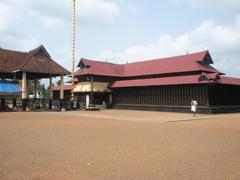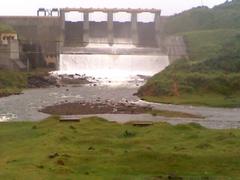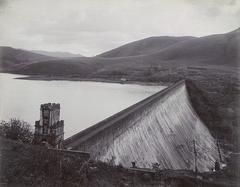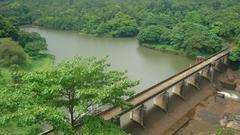Thiruvanvandoor Mahavishnu Temple: Visitor Guide, History, Architecture, Festivals, and Travel Tips
Date: 04/07/2025
Introduction
Set amidst the lush landscapes of Kerala’s Alappuzha district, the Thiruvanvandoor Mahavishnu Temple stands as a remarkable emblem of spiritual devotion, historical depth, and Kerala’s unique architectural heritage. Esteemed as one of the 108 Divya Desams—sacred abodes celebrated in the Nalayira Divya Prabandham—the temple is renowned for its legendary association with the Mahabharata, its intricate craftsmanship, and its vibrant festival traditions. Whether you are a devotee, a history enthusiast, or a cultural explorer, this comprehensive guide will equip you with detailed insights into the temple’s significance, visiting hours, travel tips, festival highlights, and nearby attractions.
Table of Contents
- Introduction
- Historical and Mythological Significance
- Temple Architecture and Artistic Heritage
- Daily Rituals and Major Festivals
- Visiting Hours, Tickets, and Entry Guidelines
- Facilities, Accessibility, and Travel Information
- Nearby Attractions and Travel Tips
- Frequently Asked Questions (FAQs)
- Conclusion
- Useful Links
Historical and Mythological Significance
Origins and Divya Desam Status
The Thiruvanvandoor Mahavishnu Temple traces its origins to between the 6th and 9th centuries CE and stands as a prime example of Kerala’s classical temple architecture. Its prominence as a Divya Desam is rooted in its glorification in the Tamil Nalayira Divya Prabandham, with hymns by the Azhwar saints, notably Nammalvar. This status elevates the temple’s spiritual importance, placing it among the foremost pilgrimage destinations for Vaishnavites (myadhyatm.com).
The Mahabharata Connection and the Pandava Temples
A unique aspect of the temple is its association with the Mahabharata. Local legend holds that the five Pandava brothers, after crowning Parikshit, established five temples along the Pamba River, each attributed to a brother. Thiruvanvandoor is linked to Nakula, integrating it into the revered Pancha Pandava Temples circuit:
- Thrichittatt Maha Vishnu Temple (Yudhishthira)
- Puliyur Mahavishnu Temple (Bhima)
- Aranmula Parthasarathy Temple (Arjuna)
- Thrikodithanam Mahavishnu Temple (Sahadeva)
- Thiruvanvandoor Mahavishnu Temple (Nakula)
This tradition amplifies the temple’s mythological stature and its role within Kerala’s pilgrimage landscape (myadhyatm.com).
Deity and Iconography
The presiding deity, Lord Vishnu as Paambanaiappan, is enshrined in a standing posture holding the conch (shankha) and discus (chakra). The name reflects the temple’s proximity to the Pamba River, symbolizing the deity’s connection to the sacred waters and local landscape (tusktravel.com).
Temple Architecture and Artistic Heritage
Layout and Spatial Organization
The temple complex is arranged according to Vastu Shastra principles, centered on the Sreekovil (sanctum sanctorum) and surrounded by a rectangular prakaram (enclosure). The main entrance, or gopuram, faces east, aligning with auspicious traditions (hellotravel.com).
Key Architectural Features
- Sreekovil: The sanctum features a square plan, laterite or granite walls, and a tiered copper-clad roof crowned by a golden finial (kalasam). The sanctum is elevated and approached by steps, symbolizing spiritual ascent.
- Namaskara Mandapam: A pavilion for prayers and prostration, adorned with wooden or stone pillars and intricate carvings.
- Chuttambalam: An ambulatory hall for circumambulation, with wooden beams and tiled roofing.
- Gopuram: Modest in height, constructed from laterite and timber, with decorative woodwork and mythological motifs.
- Balikkal and Deepastambha: The courtyard contains a sacrificial stone and a lamp pillar, both integral to ritual practices.
Artistic Elements
- Wood and Stone Carvings: Exquisite carvings of mythological scenes, floral designs, and geometric patterns adorn beams, doors, and pillars.
- Murals and Paintings: The temple features murals depicting episodes from the Mahabharata, Ramayana, and Puranas, painted in natural pigments with rich, earthy tones.
- Metalwork: Ritual objects, lamps, and vessels crafted in bronze and brass showcase Kerala’s metallurgical traditions.
Integration with Nature
The temple’s sloping, tiered roof is designed for Kerala’s monsoons, with eaves protecting the structure. Sacred groves and temple tanks (pushkarini) nearby enhance the serene spiritual environment and offer spaces for ritual purification.
Daily Rituals and Major Festivals
Daily Rituals
The temple follows a rigorous schedule guided by Tantric traditions, including:
- Nirmalya Darshanam: Early morning viewing
- Usha Pooja: Morning worship
- Ucha Pooja: Midday worship
- Deeparadhana: Evening lamp offering
- Athazha Pooja: Night worship
Offerings, Vedic chants, and traditional music accompany these rituals, and devotees may participate by sponsoring special poojas or offerings.
Major Festivals
- Utsavam (Annual Temple Festival): Held in March–April (Meenam), this ten-day festival features grand processions, cultural performances, decorated elephants, and the ceremonial “Arattu” (holy bath) on the final day (Hindu Blog – Thiruvanvandoor Temple Festival).
- Vaikunta Ekadasi: Celebrated in December–January with special poojas, recitations, and the opening of the Vaikunta Dwaram.
- Ashtami Rohini: Marks Krishna’s birth, with abhishekams, devotional songs, and cultural festivities.
- Other Observances: Vishu, Thiruvonam, and Ekadasi days, each featuring unique rituals and community gatherings.
Visiting Hours, Tickets, and Entry Guidelines
- Visiting Hours: The temple is open daily:
- Morning: 5:00 AM – 11:00 AM
- Evening: 5:00 PM – 8:00 PM Times may vary during festivals; early visits are recommended (Hindu Blog – Temple Timings).
- Entry Fees: Entry is free; donations are appreciated. Special rituals such as Archana or Palpayasam Nivedyam require nominal fees.
- Dress Code:
- Men: Mundu (white dhoti), shirts and vests removed in sanctum.
- Women: Saree, salwar kameez, or other modest traditional attire.
- Footwear must be removed before entering.
Facilities, Accessibility, and Travel Information
- Location: Thiruvanvandoor village, ~4 km from Chengannur, Alappuzha district.
- Nearest Railway Station: Chengannur (5 km).
- Nearest Airport: Cochin International Airport (120 km).
- Road Access: Buses and taxis connect Chengannur and nearby towns.
- Parking: Available near the temple.
- Restrooms & Drinking Water: Basic amenities provided.
- Prasadam Counters & Shops: Offerings and devotional items available at designated stalls.
- Accessibility: Some traditional architectural features (steps, thresholds) may limit wheelchair access; prior coordination with temple authorities is recommended.
Nearby Attractions and Travel Tips
- Aranmula Parthasarathy Temple: Another Pandava temple, ~15 km away.
- Ambalappuzha Sri Krishna Temple: Renowned for palpayasam.
- Alappuzha Backwaters & Beach: Popular for houseboat cruises and scenic views.
- Krishnapuram Palace: Historic site with Kerala murals and artifacts.
Travel Tips:
- Wear modest, clean attire.
- Photography inside the sanctum is not permitted; seek permission for other areas.
- Early morning visits provide a tranquil experience.
- Non-Hindus may have restricted access to the inner sanctum but are welcome in outer precincts.
Frequently Asked Questions (FAQs)
Q: What are the visiting hours of Thiruvanvandoor Mahavishnu Temple?
A: 5:00 AM – 11:00 AM and 5:00 PM – 8:00 PM daily.
Q: Is there an entry fee?
A: Entry is free; donations and special ritual fees apply.
Q: Are guided tours available?
A: Local guides and travel agencies offer tours; check with temple authorities for details.
Q: How can I reach the temple?
A: Via Chengannur railway station (5 km), Cochin airport (120 km), or road from nearby towns.
Q: What is the dress code?
A: Traditional attire is required; see guidelines above.
Conclusion
Thiruvanvandoor Mahavishnu Temple is a vibrant crossroads of spirituality, art, and community. Its Divya Desam status, connection to the Mahabharata, and Kerala’s living traditions make it a must-visit for pilgrims and cultural travelers alike. With its well-preserved architecture, evocative murals, and colorful festivals, the temple offers both a spiritual sanctuary and a window into Kerala’s heritage. Plan your visit with confidence, using official resources for current information on timings, festivals, and amenities.
Begin your journey into Kerala’s sacred traditions with detailed guides and updates via the Audiala app, and explore more on Kerala’s historical sites through official tourism channels like the Travancore Devaswom Board and Kerala Tourism.
Useful Links
- Travancore Devaswom Board
- Thiruvanvandoor Mahavishnu Temple on Tripinic
- “Top 13 Divya Desams to Visit in Kerala”
- HelloTravel Guide
- Hindu Blog – Thiruvanvandoor Temple Festival







